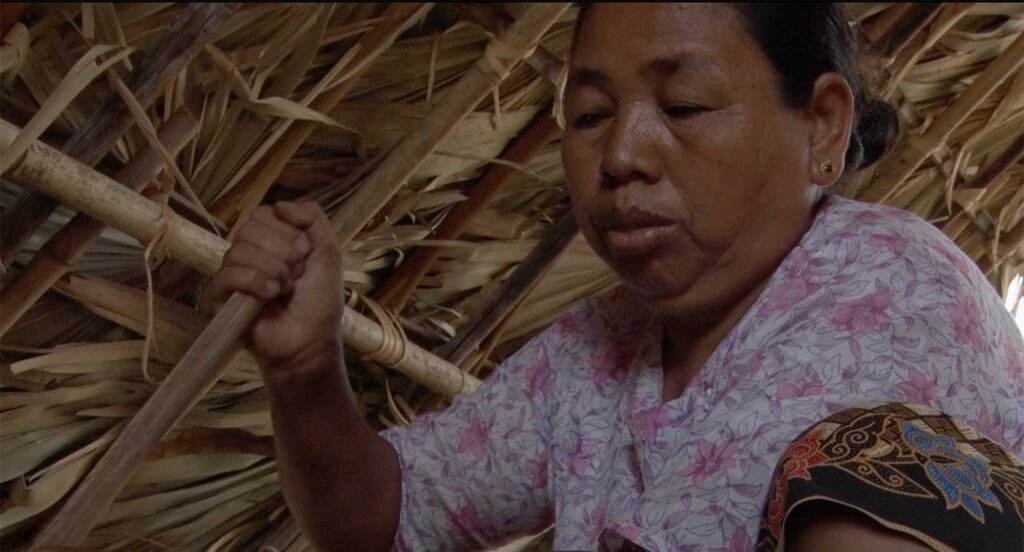Sugar and Spice: A thoughtful glimpse into the heart of Burmese culture
‘Couch Potato.’ That’s what they call me at home – when I’m found sprawled out in front of the box, surrounded by smelly dogs, crumby plates and stained teacups. I used to take offence, but… at some point, you’ve got to own what you love. And that for me, undoubtedly, is film.
But I’ll admit it: I can be a lazy lover. If I’m not careful, my film choices become conventional. After all, it can just seem easier to bliss out with mainstream guff. But I had become bored. That’s why I decided to apply for the Youth Jury & Critics Programme at the SGIFF! My knowledge of Asian film was embarrassingly non-existent and I could sense an exciting challenge in reviewing completely unknown (both metaphorically and literally) material.
Well. I was certainly “challenged”. Watching the Programmes reminded me of afternoon art trips to galleries; some pieces you’re pretty sure you could have done yourself, some look pretty but lack real meaning or substance, some you can acknowledge the skill but it’s not to your taste… and then you stand in front of one exhibit, and it just stops you in your tracks. This is how I felt when I watched Mi Mi Lwin’s short film, Sugar and Spice. Set in a rural Burmese village, the film provides a glimpse into the lives of a poor couple who sustain themselves through the making and selling of sugar balls.
In order to assess this year’s South East Asian (SEA) Short Films, I had three main expectations. My first expectation of the films was that it they demonstrated artistic sensibility. Although that may sound lofty and unappealingly high-brow, what I mean is that a film must demonstrate that the director’s harness over technical components actively engages the viewer in an artistic and genuine manner.
In Sugar and Spice, I felt that Lwin’s gentle combination of extended shots accompanied by limited dialogue positioned the viewers to be quiet observers of two (rather unremarkable) people’s lives. There is an increasing pressure for directors to create films that maintain viewers’ attention through a whirlwind bombardment of intense special effects, deafening soundtracks and explicit, confronting imagery. I was thrilled to see Lwin strip all these distractions back in order to leave us with the true essence of film: storytelling. Her creative array of differing camera angles, and her use of local actors and locations settles her audience into becoming quiet observers of the earthy ordinariness of Burmese daily life.
The second expectation I had of the SEA Short Films was that the films taught me something new. I’m not particularly interested in learning about a new actor on the Hollywood scene, or the latest CGI possibilities. I wanted to learn something about humanity – a common essence that transcended specific cultures and countries. As I said, when I joined the SGIFF Youth Jury, I had virtually no exposure to Asian culture – sadly being able to vaguely identify a dumpling doesn’t really help you much once you find yourself living in the Asia-Pacific region. That’s why I was so entranced by Lwin’s film, because I learnt a great deal about Burmese life and culture.
I myself have visited Myanmar, and have sat on local buses wondering what the little white packaged balls were that local women implored us to buy. I was thrilled to have my question answered by Lwin’s meticulous filming of the laborious processes involved – including the farming, straining and cooking of the sweet snacks sold at an outrageously cheap price. When I interviewed Lwin for this article, she informed me that she hoped her film highlighted current issues that Myanmar is facing. I feel she has employed both the use of camera work, and dialogue to explore the harsh economic reality of daily life for many Burmese people. For example, the long, silent, carefully shots of the laborious cooking process of sugar balls conveys to the audience the sheer effort involved in making these cheap sweets. Lwin’s decision to follow on from these scenes a conversation in which the wife casually admits that she can’t read the weighing scales and proudly boasts that she therefore instructs the buyers to reduce the amount shown on the scales deliberately evokes horror and pity. The understated performance by the female character highlighted for me the harsh reality of global economic disparity in a way that had never before been revealed to me. I had seen it with my own eyes during my time in Myanmar, but it became more real for me when I saw its machinations depicted in daily life.
Which brings me to my final expectation of the SEA short films: I wanted to walk away feeling changed. I can sit down and enjoy most films, but only some have the power to really leave me feeling altered. Lwin, herself grew up in a small village in Myanmar and her affection for her upbringing, family and local Burmese village life is infectious. I felt that Lwin’s unpretentious and unashamed depiction of rural life gave me a greater understanding of Burmese culture than my travels in her homeland. I felt that Lwin’s gentle and unobtrusive style truly allowed us access to the people and culture of Myanmar. For as tourists, we will always be outsiders. As Lwin realises however, as audiences we can be inside and alongside the story of others. This is the power of a great film, and I salute Lwin for gifting it to us. It is memories of films such as Sugar and Spice that will draw me back time and time again to my couch, and cause me to remain true to my nickname for years to come.
Catch Mi Mi Lwin’s Sugar & Spice in Programme 3 of the Southeast Asian Short Film Competition on 3rd December (Saturday), 11:00am, at the National Gallery Auditorium.





